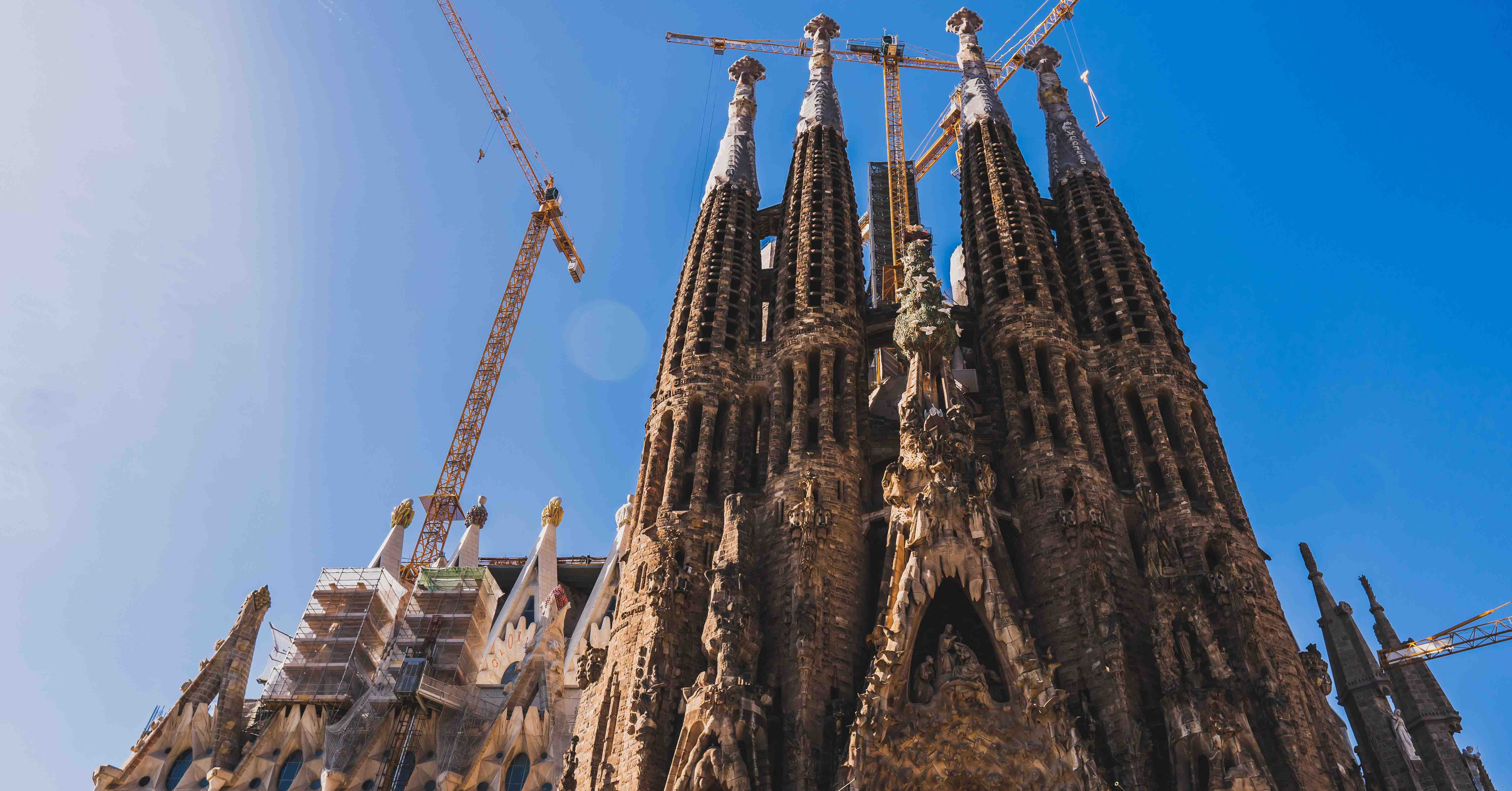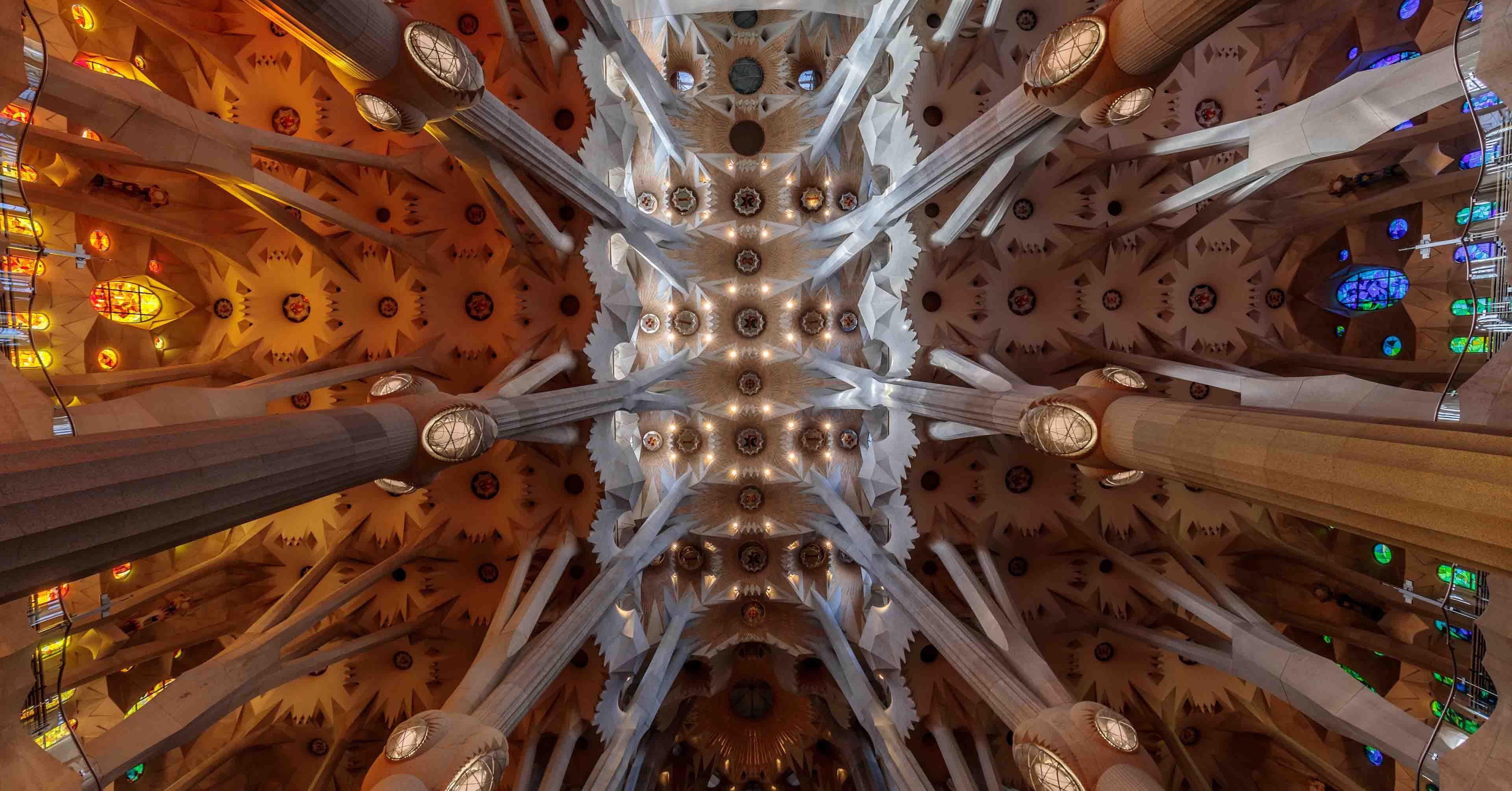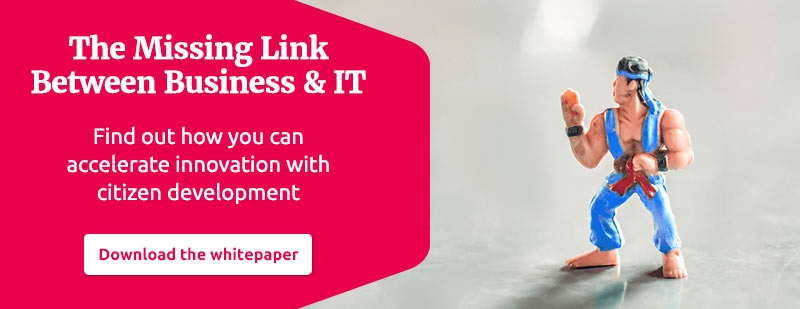When Antoni Gaudí built the Sagrada Familia, the architect designed it organically, inspired by the natural form. When Steve Jobs got the idea for his Macintosh, natural ways of interaction inspired him too. What these great visionaries had in common were not just bad temperaments.

They were Citizen Developers before their time.
Building churches
As both visionaries sought beauty in design, both also made cathedrals of some sort — Gaudí an actual church and Jobs turning the Apple way-of-life into something close to a religion.
In constructing his cathedral, Gaudí made it all up as he went. Instead of drawing up detailed plans, he would often mold the details as he conceived them. He’d plan the construction in modules of self-supporting structures that could easily be finished so building could go on long after his passing. Along those organic lines of thinking, Jobs gave us the graphical-user-interface, the mouse and touchscreens.
My point in all this? That the future of software development is deeply rooted in natural elements, ease-of-use, and seamlessness. Paradoxically, this insight gets clear while looking at software’s relatively short (60 years) history.

Simplicity as the ultimate sophistication
It’s likely that the search for organic simplicity will drive the course of tech over the next decade, as it has done before. Remember when all computers still used tedious operating commands? (C:\>dir, anyone?)
Jobs made the PC attractive with a newfound ease-of-use, democratizing the technology for the masses. Clicking on visually attractive icons with the mouse had an unparalleled intuitiveness. For the first time, everyone could use a home computer. The rest is history.
The next revolution would take place in 2007 when Jobs —Hallelujah! — gave us the iPhone. From thereon, the mouse was on its way out; touchscreens became the new standard.
Jobs knew that simplicity must be the ultimate end-goal when designing cool stuff. With his inventions he improved the ease-of-use and lowered the learning curve in each field he disrupted. Yet his focus was still on the democratization of the user, not the developer.
Touch is sacred
Our hands have become the new pens, keyboards and mouses of the 21st century. Now we coordinate through digital realms using just our fingertips, swiping, pinching, expanding and double-tapping on virtual boards like second-nature. Interfaces are turning more playful, tactile and intuitive by the day. We see devices and their software increasingly built to fit and interact with our hands.
Simultaneously, we make tremendous progress in speech-controlled virtual assistants like Siri, Google and Alexa. With an ageing Western population, these are great. “Elders are quick to embrace [them] because it eliminates two core factors that challenge their quality of life in day-to-day living: tactile interfaces and physical presence,” says interface leader Bryce Rutter.

A new organic tech-ecosystem is gradually nesting itself in our society, a system that preaches speed, efficiency and seamlessness. These new ways of interaction completely change what it means to be a software engineer, what it means to write programs.
No wonder the world of software development must adapt to this new age. With coding languages more intuitive, scalable and compatible and — most preferably in the eyes of Gaudí and Jobs — no-code solutions.
For they are the next step in creating the ultimate user- and developer experience. And when the code we use feels more meaningful, organic and intuitive, the glove will better fit us.
No-coders avant la lettre
And so, Gaudí and Jobs were the no-coders before their time. They believed in the potential of natural elements, the magic of touch, and visual attraction. In fact, Jobs had envisioned the Citizen Developer far ahead of his conception. Just as he helped usher in the user’s democratization, it is only natural to think the democratization of the developer would someday follow.
After 137 years of construction, the Sagrada Familia is still incomplete. As is our natural quest for seamlessness and simplicity. For it will probably remain an ever ongoing journey, a process that Betty Blocks is proud to take part in.
Some organizations are now building their own Sagrada. Univé for instance. They know that their existing software is great, but they need to take a leap in testing solutions that are more viable. And they did so by adopting Citizen Development.

Just like Gaudi when he was building the Sagrada, they don’t know exactly where they’re going (does anyone?). But their Citizen Developers are supported by no-code in their innovation. It removes the barriers as it can be operated more intuitively by people that are business users first and developers second. They can test their application quickly and build something that’s ready for the market instantly. They can easily start over again, without losing everything. With no-code and Citizen Development, Univé has considerably accelerated their innovation.
Want to know more about our no-code platform and Citizen Development?


